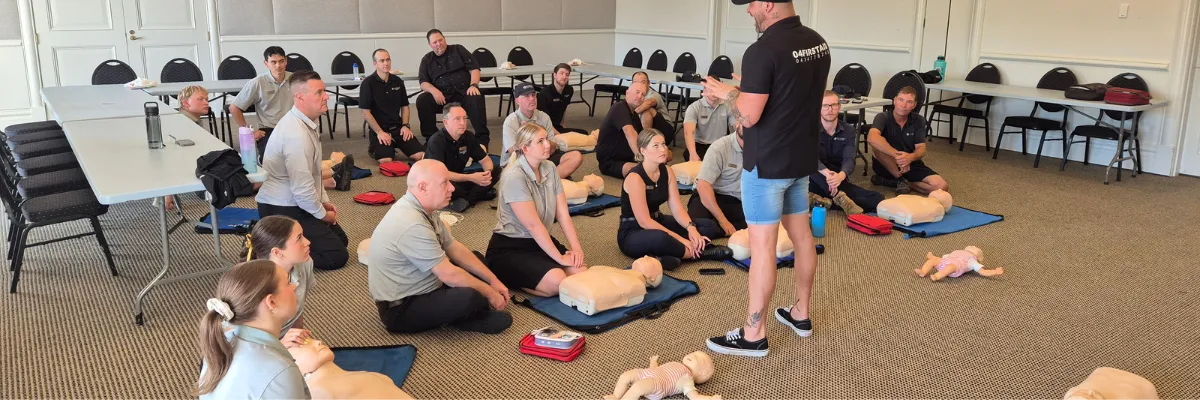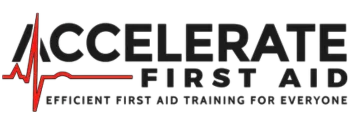
Resuscitation Techniques 2025: What's New in Emergency Response and Advanced Life Support
Are you confident your resuscitation skills reflect the latest 2025 evidence-based protocols? With cardiac arrest survival rates improving by up to 12% when responders use updated techniques, staying current isn't just about compliance—it's about saving lives.
I remember talking to a senior lifeguard last month who'd been doing CPR the same way for six years. She was shocked when I told her the compression depth guidelines had been refined again. That's the reality for most of us in emergency response—the science keeps evolving, and we've gotta keep up.
The landscape of resuscitation techniques 2025 has evolved significantly, with new guidelines from the Australian Resuscitation Council (ARC) and International Liaison Committee on Resuscitation (ILCOR) reshaping how emergency responders approach cardiac arrest, airway management, and advanced life support. Whether you're a healthcare professional, lifeguard, first responder, or safety officer, understanding these updates matters for your certification and effectiveness during emergencies.
In this guide, you'll discover the latest changes to CPR compression techniques, updated oxygen therapy protocols, new defibrillation guidelines, and advanced airway management strategies for resuscitation techniques 2025.
What Are the New CPR Guidelines for 2025?
The CPR guidelines 2025 introduce several evidence-based updates to improve cardiac arrest survival rates:
Compression depth refinement - Now 5-6cm for adults (previously 5cm minimum). Too deep can cause injuries, too shallow won't circulate blood effectively.
Increased compression rate precision - Strict 100-120 compressions per minute, with real-time feedback devices recommended in professional settings.
Enhanced focus on minimizing interruptions - Chest compression fraction target raised to >80% of resuscitation time. Every second without compressions reduces survival chances.
Technology integration - CPR feedback devices now mandatory in professional settings for quality assurance.
Ventilation updates - 30:2 ratio maintained, with improved bag-valve-mask techniques and focus on avoiding over-ventilation.
These updates are now incorporated into HLTAID015 certification requirements across Australia.

Understanding the 2025 Resuscitation Guidelines Update
The International Liaison Committee on Resuscitation (ILCOR) conducts systematic reviews of resuscitation science every year, analyzing thousands of studies and real emergency responses. The process typically takes 2-3 years from research publication to guideline implementation.
The Australian Resuscitation Council (ARC) adapts international consensus from ILCOR for our specific context—accounting for our emergency response systems, equipment availability, and training infrastructure. When the ARC publishes guidelines for Australia, they're aligned with what paramedics in Canada, emergency physicians in the UK, and lifeguards in New Zealand are learning too.
The 2025 guidelines were officially published by the ARC in early January 2025. Training organizations updated their course materials by March 2025. If you hold a current HLTAID015 certification issued before these updates, your certification remains valid until its expiry date—but you'll be assessed against 2025 standards when you recertify.
Basic Life Support (BLS) Updates for 2025
CPR Compression Technique Refinements
The compression depth change might seem minor—5-6cm instead of "at least 5cm"—but there's real science behind it. Compressions deeper than 6cm cause rib fractures and internal injuries without improving circulation. Compressions shallower than 5cm don't generate enough pressure to move blood through the body.
The rate precision of 100-120 compressions per minute is your optimal zone for cardiac output. The emphasis on full chest recoil between compressions is stronger than ever—you can't just push down and hold pressure. Each compression needs complete release, letting the chest wall spring back fully.
The compression fraction target of >80% means if you're doing CPR for 10 minutes, your hands should be actively compressing for at least 8 of those minutes. Feedback devices are now expected in professional settings, giving you real-time data on compression depth and rate.
AED and Ventilation Updates
AED protocols got streamlined, with the biggest change being minimizing that pre-shock pause. Modern AEDs analyze rhythm faster—maybe 5-10 seconds from stopping compressions to shock delivery. The critical update is resuming compressions instantly after the shock—no pulse check, no waiting, just straight back to CPR.
The 30:2 ventilation ratio remains, but the focus shifted to proper bag-valve-mask technique. You're looking for visible chest rise, not massive inflation. Squeeze the bag over 1 second, watch for chest rise, then let it fall naturally. If you're seeing the abdomen distending, you're pushing too much air in.
Advanced Life Support (ALS) and Specialized Protocols
Advanced Airway Management
Supraglottic airway devices like the i-gel or laryngeal mask airway are now preferred in many pre-hospital cardiac arrest situations. You can insert them faster, with less interruption to chest compressions. If you can't get an endotracheal tube in within one attempt without prolonged interruption, you're better off with a supraglottic device.
Waveform capnography is now standard, not optional. That continuous CO2 monitoring tells you if your airway device is in the right place, if your CPR quality is adequate, and potentially if you've achieved ROSC before you even check a pulse.
Medication and Team Dynamics
Epinephrine timing got refined—for non-shockable rhythms, give it as soon as you've got IV or IO access. For shockable rhythms, wait until after the second unsuccessful defibrillation attempt. The dosing stayed at 1mg every 3-5 minutes, but there's stronger emphasis on not delaying compressions for drug administration.
Team dynamics got major focus in 2025. Closed-loop communication is mandatory—when the team leader calls for a medication, the person administering repeats back: "Giving 1mg epinephrine IV now." Role assignment needs to happen immediately, and debriefing after resuscitation attempts is now emphasized for continuous improvement.
Pediatric and Oxygen Therapy Considerations
Pediatric Resuscitation
For infants under 1 year, use a two-finger technique for compressions (or two-thumb encircling hands with two rescuers). Compression depth is about 4cm—roughly one-third the chest depth. Children aged 1-8 years get single-hand or two-hand compressions at about 5cm deep.
The compression-ventilation ratio is 30:2 for single rescuers, but switches to 15:2 with two rescuers on pediatric arrests. That higher ventilation ratio reflects that respiratory issues cause most pediatric cardiac arrests.
Pediatric AED Guidelines:
Use pediatric pads for children under 8 years or under 25kg
If pediatric pads unavailable, adult pads work (ensure they don't overlap)
Place one pad front, one pad back if needed to prevent overlap
Oxygen Therapy Updates
For most patients, target oxygen saturation (SpO2) of 94-98%. COPD patients are the exception—target 88-92% saturation. During cardiac arrest, give 100% oxygen.
Device selection matters. Nasal cannulas deliver 1-6 liters per minute for patients breathing adequately. Non-rebreather masks deliver 10-15 liters per minute for higher needs. Bag-valve-mask with reservoir is your device for cardiac arrest, delivering close to 100% oxygen at 15 liters per minute.

Technology and Training for Resuscitation Techniques 2025
CPR Feedback Devices and Modern Equipment
CPR feedback devices are small pucks that sit on the patient's chest during compressions, measuring exactly how deep you're pushing and how fast. Most units have visual displays—green means you're good, red means adjust. Some include audio metronomes that beep at 100-120 compressions per minute.
These devices log your entire resuscitation—compression depth, rate, recoil completeness, hands-off time. Facilities using feedback devices show compression quality improvements of 30-40% within the first few months.
Modern AEDs in 2025 provide enhanced voice prompts, visual instruction displays, and connectivity features that transmit data to emergency dispatch. Maintenance alert systems monitor battery status and pad expiration automatically.
HLTAID015 Training and Certification
HLTAID015 certification is valid for 12 months and now includes all 2025 guideline updates. The course covers refined compression techniques, feedback device integration, and team-based scenarios. You'll be assessed on high-quality CPR performance, airway management, AED operation, and effective team coordination.
Recertification can be done through refresher courses (shorter and focused on updates) or full recertification. Book your recertification 4-6 weeks before expiry to avoid lapses.
Maintaining Skills and Avoiding Common Mistakes
Your resuscitation skills start declining within weeks of training if you're not using them regularly. Skills decay research shows that compression quality and algorithm recall diminish over time without practice. By 6 months post-training, many people can't perform CPR to the same standard they demonstrated on assessment day.
Practice recommendations include regular scenario drills, working with feedback devices to maintain technique, and participation in workplace emergency drills. Many training providers offer open practice sessions where you can work on manikins with instructor supervision.
Common Transition Mistakes to Avoid
Common mistakes when switching to 2025 protocols include compression depth errors (either too shallow or too deep), not maintaining the >80% compression fraction, and confusion about when to use advanced airways. The key is deliberate practice of new methods until they become your default response.
When accepting feedback, remember that pointing out technique issues helps you improve—compression quality data and team debriefings create real learning opportunities.
Get Trained in Resuscitation Techniques 2025
Reading about updates is good, but resuscitation is a hands-on skill. You can't learn proper compression depth from an article.
Our HLTAID015 Advanced Resuscitation course integrates all the 2025 guideline updates covered in this article. You're getting current, evidence-based training that reflects exactly what the Australian Resuscitation Council published this year.
What You'll Gain:
Complete 2025 protocol mastery with every technique change covered
Nationally recognized HLTAID015 certification meeting workplace requirements
Real-world scenario training with distractions, time pressure, and team coordination
Same-day certification available
Ongoing technique support after your course
The 2025 resuscitation guidelines represent the best available evidence on saving lives during cardiac emergencies. Whether you're a senior lifeguard, workplace safety officer, healthcare professional, or anyone needing advanced resuscitation skills, getting trained to 2025 standards is the baseline for effective emergency response.
Don't let outdated training compromise your ability to respond when it matters most.
Questions about the course?
Phone: 0434778243 | 04FIRSTAID
Training Locations: 288 Gooding Dr, Carrara Gold Coast, QLD, 4211
Hours: Mon-Sat: 8am-5pm


